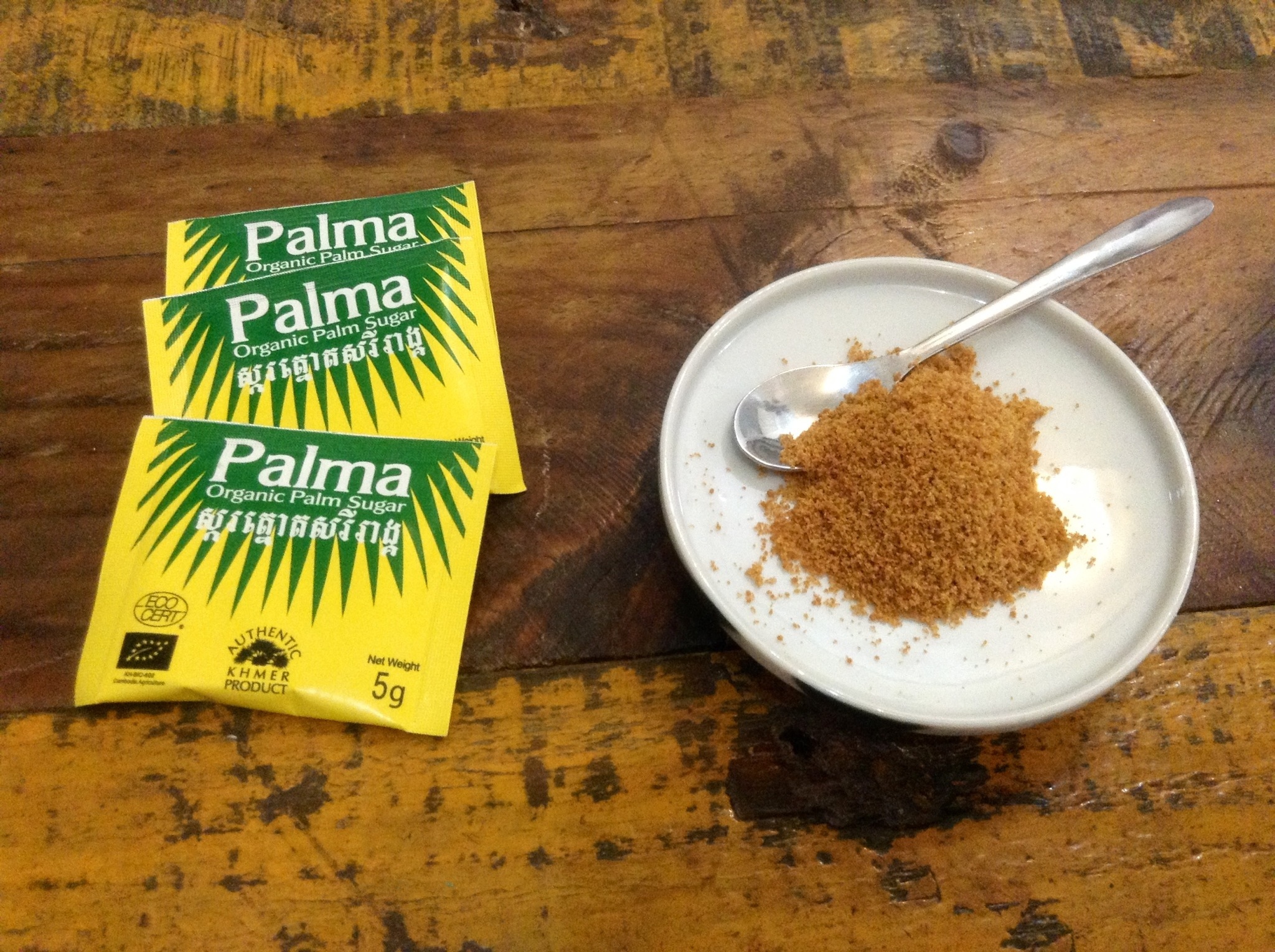Para los camboyanos, la palma es un ícono nacional, de la que todo se aprovecha. Sus hojas y madera se utilizan como material de construcción, mientras que la savia sirve para fabricar vino y azúcar, el azúcar de palma.
Seguramente sabéis que hay varios tipos de azúcar dependiendo del árbol de donde proceda. En Europa estamos acostumbrados a usar el azúcar de caña, el azúcar blanco que todos tenemos en casa, o el azúcar moreno de la remolacha azúcarera; pero por aquí en Camboya, lo que se usa es este sabroso y rico azúcar de color moreno intenso.
Etiopía, Tanzania, India o Indonesia son productores de azúcar de palma, pero los expertos dicen que la camboyana es la de mejor calidad por su sabor y sus alto contenido en nutrientes. Y como estoy viviendo por aquí he creido oportuno darle un poco de publicidad.
Desafortunadamente, el azúcar de palma no es tan famoso como la pimienta de Kampot (considerada una de las mejores en el Mundo) pero decir que tiene reconocida la denominación de origen (IG, identificación geográfica).
Pero la producción de azúcar de palma da mucho trabajo, pues los agricultores deben trepar a los árboles de hasta 30 metros para cosechar la savia, y luego cocinarla al fuego para transformarla en azúcar. Si ha esto añadimos que hace unos años se concedieron tierras a grandes plantaciones de caña de azúcar, las cuales destruyeron muchas de esas palmas, nos encontramos con un mercado desaventajado y con pocas posibilidades, lo que es una pena pues Camboya, estaría perdiendo uno de sus productos estrella.
Creo que su comercialización no ha llegado a Europa, pero si la veis por ahí os animo a probarla y a apoyar así a los agricultores locales camboyanos.
The palm tree is for Cambodians like Guinness for the Irish, a national icon. Everything can be used from a palm tree, leaves and wood for house building and the sap to make wine and sugar.
Today I wanted to talk to you about this palm sugar. Probably you know there are different types of sugar depending on where it come from. The common granulated white sugar, everyone has at home, proceeds from the sugar cane; the sugar beet gives us the brown sugar and as I’ve told you, the (date) palm produce the palm sugar.
This palm sugar is a rich brown sugar with an intense flavour similar to honey or honeycombs. The farmers sweat their heads off getting it, they climb the tall palms (sometimes 30 meters high), extract the sap and cook it, to transform it in the sugar we find here in the market.
Ethiopia, Tanzania, India or Indonesia are sugar palm producers too, but the experts say the Cambodian Is the best, it has a better quality, flavour and more nutrients than the others.
Unfortunately the government does not really help the local farmers to it’s production or distribution, they also sold part of the land where the palms used to grow to large sugar cane plantation companies which destroyed the date palms. This added to the hard work of getting the sap, give the palm sugar market few possibilities of grown and big disadvantages to the local farmers compared with the sugar cane market; which is a shame, because sugar palm is really an amazing and special sugar.
I believe it is not possible to buy it in Europe, but if you see it, please buy it, you won’t regret it, you will be supporting local Cambodian farmers and also enjoying this fantastic sugar!

Un comentario en “Azúcar de palma / Sugar Palm”